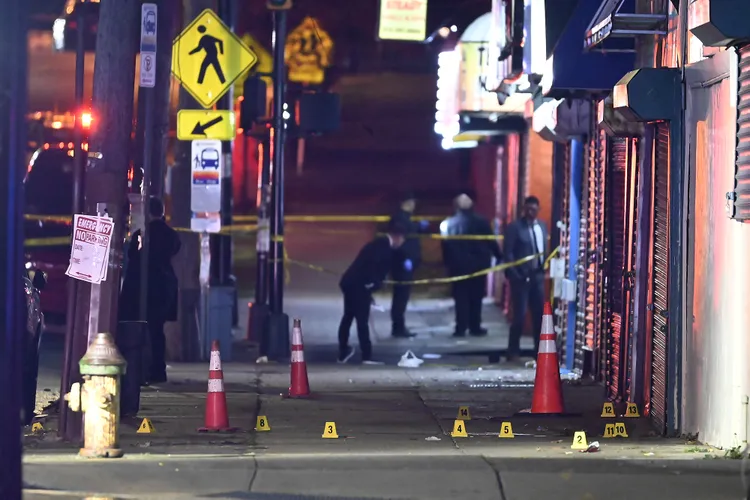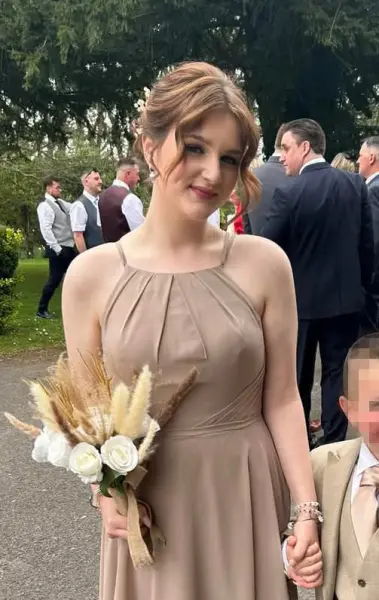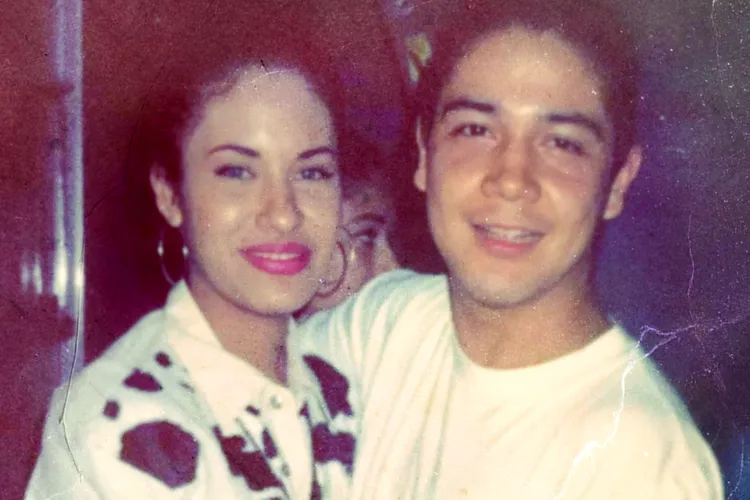A Quiet Saturday Evening Turned Into Tragedy When a 10-Year-Old Boy and a 21-Year-Old Woman Were Killed in a Newark Mass Shooting That Left Families and an Entire Neighborhood Grieving
Just after 7 p.m. on a Saturday evening, as families in Newark, New Jersey, were settling in for what should have been an ordinary night, the sounds of gunfire shattered the rhythm of the neighborhood. Within minutes, a street that had been filled with ordinary weekend movement — people walking to stores, children playing nearby, cars passing through — became a cordoned-off scene lined with police tape, evidence markers and stunned silence. Two people were dead. Three others were hurt. And among the victims was a 10-year-old boy whose life was taken before it had the chance to fully begin.
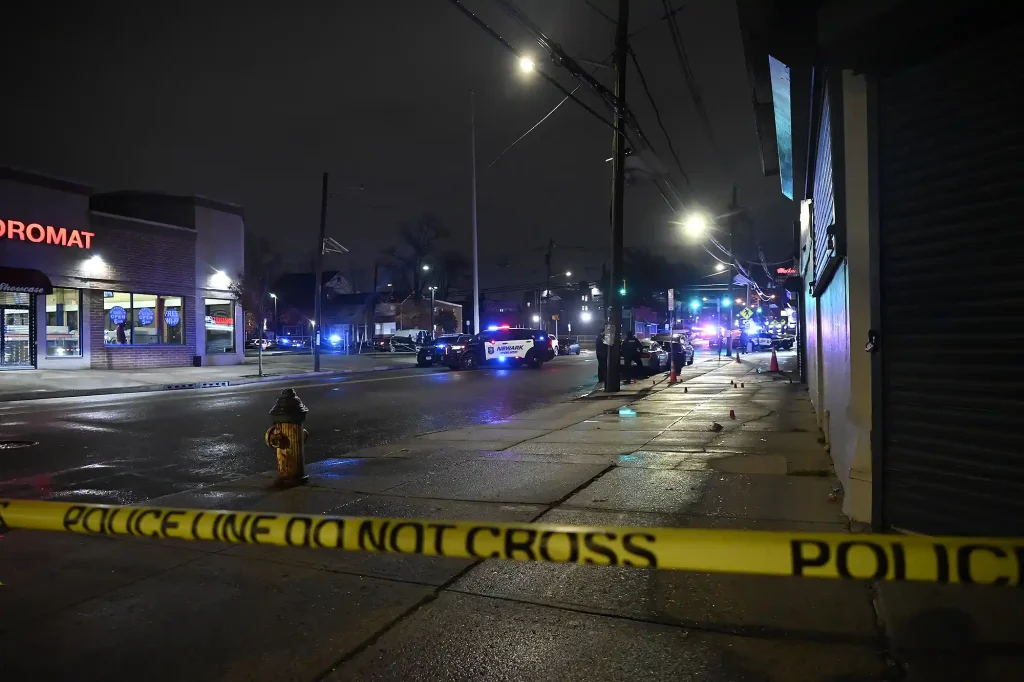
Authorities confirmed that the shooting took place on the 300 block of Chancellor Avenue, a section of the city where residents say they are used to hearing sirens, but never become numb to them. A 21-year-old woman was pronounced dead at the scene. The young boy died at a nearby hospital shortly after. Three others — all adults — were injured but survived. As of this writing, no arrests have been announced and no motive has been publicly confirmed.
For many outside the community, the news appeared as a headline — another tragic line in a string of statistics that appear across the country far too often. But for those who live there, it was personal, immediate and deeply painful. The child had reportedly been walking near the area when bullets were fired. A witness told local reporters that she heard “a burst of popping sounds,” followed by screaming. People ran in multiple directions, desperate to find safety. A mother was overheard yelling her son’s name again and again before officers helped her reach him, the kind of moment that becomes etched into the memory of everyone who sees it.

The 21-year-old woman, whose name had not been officially released at the time of this writing, was described by neighbors as “kind, funny, and always smiling.” She had walked that path many times. She was not involved in any dispute. She was simply present when someone else chose violence. A family friend told a local station, “She was in the wrong place at the wrong time — but that’s the hardest part. These are our streets. We shouldn’t have to fear walking on them.”
Police arrived quickly, and investigators began marking shell casings under the glow of streetlights and shop signs. Yellow evidence markers dotted the sidewalk like a grim trail of unanswered questions. Those questions will likely continue long after cameras leave.
In the hours that followed, the community response was instant. Residents stood behind the police line, not out of curiosity but grief. Some cried openly. Some just stared, arms folded, trying to understand how a simple Saturday evening could turn into a moment that would change families forever. A local pastor described it as “a wound on the block,” one that everyone felt, whether they knew the victims personally or not.
Newark, like many cities in America, has lived through cycles of violence, reform, progress and heartbreak. City leaders have invested heavily in community-based crime intervention, youth programs, neighborhood outreach teams and trauma counseling. There are stories in this same city of restored streets, of once-dangerous areas becoming places of work and living again. Yet moments like this remind people how fragile that progress feels. A single act can reset fear, especially when the youngest among them becomes a victim.
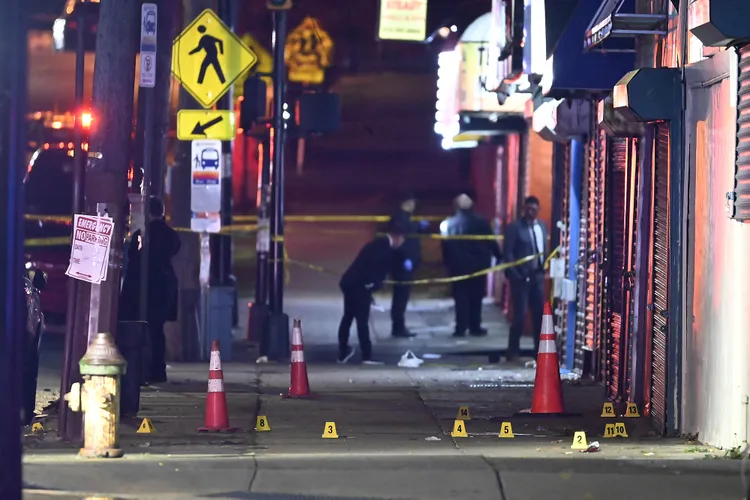
The shooting also added another layer to an ongoing national conversation about children harmed by gunfire in places that were not crime scenes minutes earlier. Across the United States, gun violence involving minors continues to rise even as other crime categories fall. Advocates say this makes the grief even heavier — because it is not just about the life lost but about the world children are growing up in.
Officials held a brief news conference the next morning. Newark Public Safety Director Fritz Frage confirmed the victims, expressed condolences and emphasized that every available resource would be used to identify the shooter or shooters. Investigators reviewed street surveillance footage, interviewed witnesses and canvassed nearby businesses in hopes of piecing together what happened in the seconds leading up to the gunfire. Police have urged anyone with information to come forward, and anonymous tip lines have been activated.
Mayor Ras Baraka released a statement calling the shooting “devastating” and promising accountability. Community organizations quickly mobilized grief counselors and violence-intervention workers, a sign of how practiced the response has unfortunately become. One organization set up tables the next afternoon offering free mental health support for children in the area. “They heard the shots too,” the organizer said. “The trauma doesn’t stop just because they made it home.”
A woman who lives nearby stood with folded arms and watery eyes as investigators worked overnight. She said she had passed the little boy before on the street and remembered him wearing backpacks too big for his shoulders. “He should have been worrying about homework and cartoons,” she said. “Not gunfire.”
Residents described hearing not just the shots — but the silence afterward. One man who grew up on the same block said that after sirens faded and the crowd dispersed, the stillness felt almost unnatural. “It was like the street was holding its breath,” he said. “As if everyone was waiting to wake up from it.”
That silence, however, does not last forever. The next morning, children still walked to school. People still opened storefronts. A city still carried on — but with heavy hearts.
Violence experts often say that communities are not just harmed by crime itself, but by the loss of ordinary life that follows. Parents now choose alternate walking routes. Residents look twice at cars cruising slowly down the block. A place that might once have been neutral territory — a sidewalk where neighbors said hello — becomes a silent reminder of risk.
And yet, Newark is also a city known for resilience. Local churches have already begun planning community vigils. Families from nearby areas dropped off stuffed animals and candles along the sidewalk. A handwritten note left under one of them read simply: “He was only 10. We deserved to watch him grow up.”
In telling the story of tragedy, people there are determined not to let victims become statistics. The young boy had a name, a family, a birthday that will now forever be followed by grief. The 21-year-old woman had plans, routines, inside jokes with friends. Those details matter, residents said, because without remembering who was lost, it becomes too easy to accept losses as inevitable.
Authorities have not said whether the shooting was targeted or random, though sources say investigators are exploring multiple possible motives. The three surviving injured victims are expected to recover physically, though doctors and relatives note that emotional recovery can be far more complicated.
For now, the community waits — for answers, for accountability, for a sense of safety to return.
What they do not wait for is each other. Groups have already assembled food drives for the affected families. Local leaders are pushing for both short-term security and long-term funding for youth programs. And every conversation — from barbershops to church halls — carries the same message: children should not be caught in crossfire. A street corner should not become a memorial.
In the midst of the grief, a line spoken by one resident captured what many felt: “We don’t just want justice after the fact. We want to stop standing here.”
That may sound like hope. In reality, it is determination — the refusal to normalize a tragedy simply because it happened before.
The weekend shooting in Newark was not just an incident. It was a reminder of what is lost when violence enters a community uninvited. It was a warning of how quickly ordinary moments can turn into headlines. And it was a call — from grieving families, from neighbors still in shock, from activists who have fought this battle too long — to make sure this story is not just told, but heard.
The youngest victim was 10 years old. He should have grown up. He should have gone home that night.
Instead, his community now carries the unbearable task of remembering him — and trying to ensure no one else follows.
